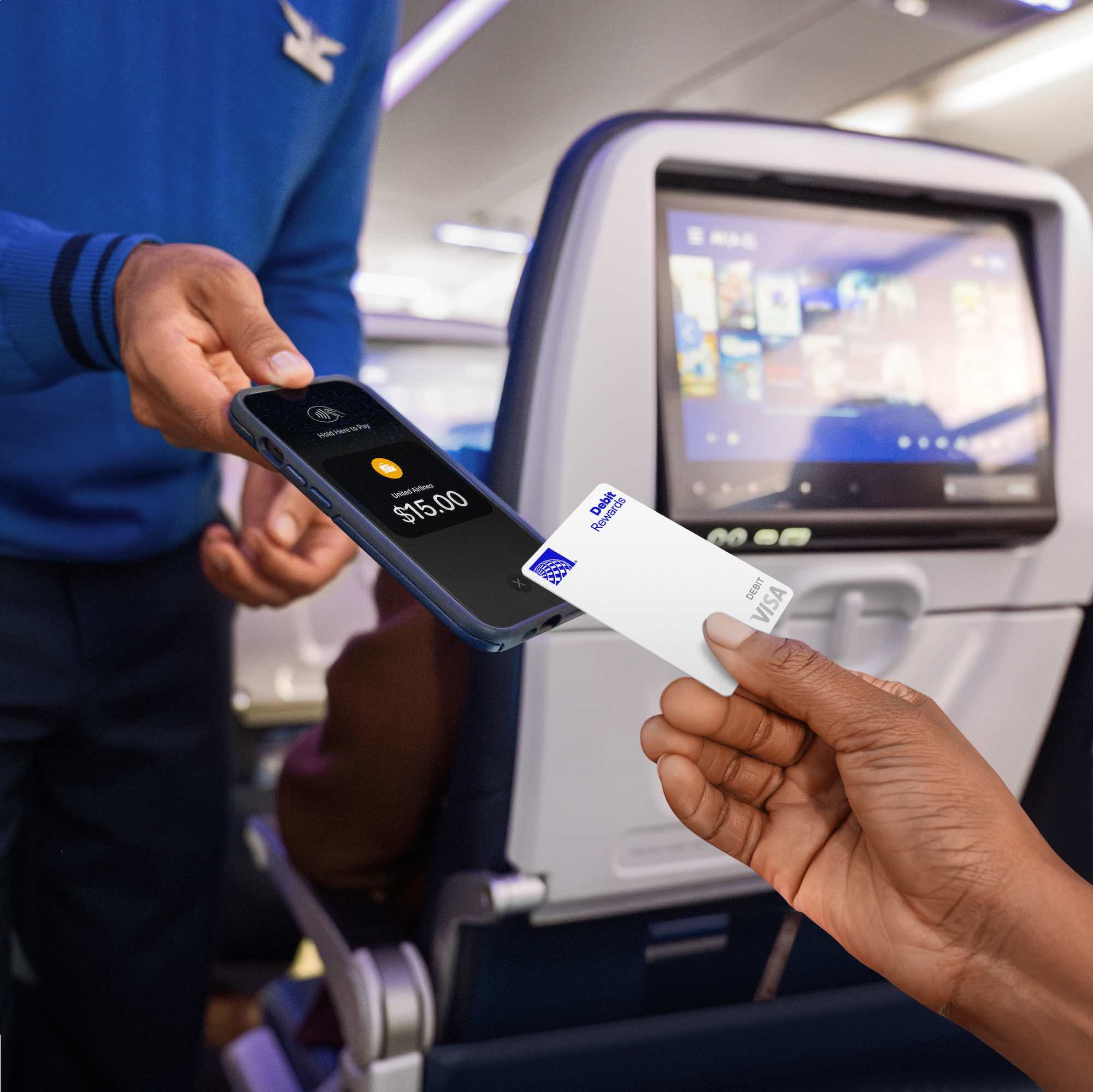Intriguing: United Airlines Launches No-Fee Debit Card That Earns Miles

While United Airlines has long rewarded frequent flyers through its MileagePlus credit card portfolio, the carrier is introducing a new way to earn miles via a new debit card United is calling its MileagePlus Debit Rewards Card.
United Airlines Debuts MileagePlus Debit Rewards Card
United Airlines has launched the MileagePlus Debit Rewards Card, a new Visa debit card that lets members earn miles for both spending and saving. Issued by Sunrise Banks and powered by Galileo, SoFi’s tech platform, the card bridges the gap between traditional banking and loyalty rewards.
In a conference call with reporters, Richard Nunn, CEO of MileagePlus, called the new card “a simple and rewarding way for members to make progress toward their next trip, whether they’re buying groceries, paying bills, or saving for the future.”
A Debit Card That Earns Miles
Cardholders can earn:
- 1 mile per $1 spent on United purchases
- 1 mile per $2 spent on other eligible purchases
- 10,000-mile sign-up bonus after $500 in purchases within the first four months
- 2,500 bonus miles each calendar year after $10,000 in annual spending
Additionally, customers can earn bonus miles on their average daily account balance, ranging from 2,500 miles for balances above $2,500 to as many as 70,000 miles per year for balances above $50,000. Nunn said the product was designed “with flexibility and transparency in mind,” adding that there are no monthly fees for accounts maintaining an average daily balance of $2,000 or higher (otherwise, the monthly fee is $4).
Reaching Younger Flyers
The debit card is clearly aimed at younger travelers and those who prefer debit over credit. As Richard Daley, United’s Managing Director of Global Co-Brand Cards, explained, “Over 80% of adults have a debit card and we haven’t had an offering in the space. Debit is growing faster than credit, and many younger generations are using debit as their primary card and trusted form of payment.”
The card requires no credit check, making it accessible to a broader range of MileagePlus members. It also allows members to lock or unlock their card, set spending limits, and track miles earned in real time.
Cardmembers who already have a United co-branded credit card can still apply for and use this new debit card.
United says the new debit card extends the MileagePlus experience “beyond the plane,” reflecting a growing trend of loyalty programs moving into everyday spending. For United, that means deepening customer engagement and driving deposits, all while expanding its reach to members who may not carry a credit card.
“This card builds on our existing card portfolio,” Nunn said. “Our goal is to have a card for every type of traveler who flies United—no matter their need.”
Do The Economics Make Sense?
If you keep an account balance, you’re trading interest (money) for miles here. Does it make sense?
| Average Daily Balance | Annualized Bonus Miles | (Earned Monthly – 1/12) | Monthly Fee |
|---|---|---|---|
| <$2,000 | N/A | N/A | $4 |
| $2,000 – $2,499 | N/A | N/A | Waived |
| $2,500 – $4,999.99 | 2,500 | ~208 miles/month | Waived |
| $5,000 – $9,999.99 | 5,000 | ~417 miles/month | Waived |
| $10,000 – $24,999.99 | 15,000 | ~1,250 miles/month | Waived |
| $25,000 – $49,999.99 | 30,000 | ~2,500 miles/month | Waived |
| $50,000+ | 70,000 | ~5,833 miles/month | Waived |
While it ultimately depends on how much you personally value miles, if my $50,000 is earning 3% in a money market, that $50,000 grows to $51,500 in a year (maybe more if the interest is compounded monthly). Is $70,000 worth $1,500? It could be…it’s at least worth considering. If you’re money is earning more than 3% elsewhere, I’d leave it there…
How Is This Possible Post–Durbin Amendment?
For those familiar with banking regulations, the obvious question is: how can a debit card earn airline miles in the post–Durbin Amendment era? That 2010 legislation capped interchange fees on debit transactions for banks over $10 billion in assets, effectively killing most debit mileage programs overnight. The math simply stopped working…until now?
When asked about the economics, Nunn refused to dig deep:
“We don’t disclose any of the commercial dealings; that’s confidential. This is a value proposition for the customer, whether they’re spending or saving, there’s a lot of value that the customer can glean. The economics work out or else we wouldn’t be doing it, but we won’t be disclosing the commercial economics behind it.”
While Nunn declined to elaborate, the structure likely hinges on two factors. First, Sunrise Banks, the card issuer, is a smaller, mid-tier bank not subject to Durbin caps. That allows it to collect higher interchange revenue on debit transactions. Second, United is almost certainly leveraging co-branding and deposit partnerships to monetize balances beyond pure spend, capturing value from the interest and engagement those deposits generate.
In essence, the card revives the pre-Durbin debit model through combining small-bank economics, loyalty integration, and data-driven value exchange. It’s not magic, it’s just a smarter way of fitting old-world mileage economics into a new regulatory framework. But that’s just my guess…
CONCLUSION
United’s new MileagePlus Debit Rewards Card marks a return of mileage-earning debit products not seen since the pre–Durbin Amendment era. While its earning rates won’t match credit cards, it represents a smart way to engage younger travelers, diversify loyalty pathways, and reward customers for saving as well as spending.
For those who prefer debit to credit but still want to earn toward free travel, it’s a nice new option. However, if you have extra cash sitting around, I recommend a more aggressive investment…
image: United Airlines